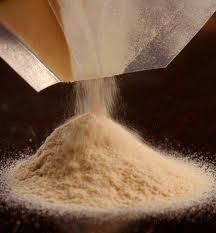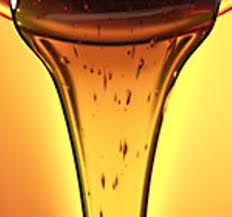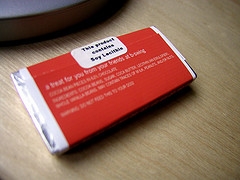
Its role is to break down the fats in your body. Lecithin is naturally found in the foods that most of us eat, especially rich foods, such as egg yolks, soybeans, grains, wheat germ, liver, cauliflower, fish, legumes, yeast, and peanuts.
Maurice Gobley, a French scientist discovered lecithin in the egg yolk in 1846, and since then, scientists, the food industry and the government has worked hard to ensure that a synthetic form of this lecithin is not only present in almost every processed food, but that it would be harmful to the body.
For all the science geeks out there, in biochemistry terms and other related science, lecithin is a synonym for phosphatidyl choline. It is the main lipid component in biological membranes, like our cell membranes or cell walls of plants. On the other hand, commercial lecithin is actually a natural mixture of neutral and polar lipids, including glycolipids, triglycerides, sterols, and small quantities of fatty acids, carbohydrates, and sphingolipids.
Lecithin that contains phosphatidyl choline is produced mainly from vegetable sources, although it may also be found in animal and microbial sources. The majority of commercial lecithin sold in the market today come from soybean (mostly), sunflower, and grape seed. When talking about plant lecithin, the most common source is soybean. This is a big red flag, because most all soybeans are genetically modified and highly tainted with pesticides, but we will get into why that is so bad a little later.
According to the Institute of Medicine (1998), lecithin provides a great source of choline-- essential to every cell in the body, for it is one of the main components of cell membrane. It builds brain cells and improves cardiovascular function.
⚛ Improves cardiovascular health
⚛ Improves liver and cell function
⚛ Fat transport and fat metabolism
⚛ Healthy reproduction and child development
⚛ Better treatment for gallstones
⚛ Increases the improvement of memory, learning and reaction time in people
⚛ Helps grow healthy hair and skin
⚛ Increases cell communication
⚛ Better physical performance and muscle endurance
⚛ Relief of arthritis
Pretty great, huh? But before you rush out to the closest health food store to buy a bunch of commercial lecithin or anything with the name lecithin in it, learn to read labels . . . especially the difference between lecithin and soy lecithin.
According to the Mayo Clinic and British Journal of Nutrition, there are vast differences between the two, though the food industry tries to confuse consumers with its play on words and marketing of the word lecithin. Soy lecithin is derived from soya, the beans retrieved from pod of the soya plant. Once harvested, the soya is turned into a myriad of food products such as oil, tofu and milk. These products are processed with toxic Hexane. The “stuff” that is chemically turned into soy lecithin is a by-product of the soy manufacturing process that is often dehydrated and then recolored with chemicals to make it lighter so that it can be added to foods to make them “smoother” and to act as an emulsifier to keep foods like butter or cake mix from separating and to make the cleaning of manufacturing equipment faster (i.e. for the non-stick properties). The bottom line: Soy lecithin (shown in the powder form to the right) is a waste product left after producing soya oil, and lecithin is a collection of several phospholipids that have both health and industrial uses.
The mixed reviews and strong opinions regarding soy lecithin in the media and nutrition arena confuse even me. On one hand, there are professionals in the field that proclaim soy lecithin’s amazing health benefits, including: improving brain functioning, promoting healthy weight loss, lowers cholesterol, prevents diseases and detoxifies the liver. They say that as long as the soy lecithin you chose to consume is fermented, follows guidelines passed by the FDA for pesticides toxicity and is not genetically modified, it is a great supplement to man’s diet.
It’s scary to read the flip side of this argument, however.

The soybean was a modest and unpopular crop until food manufacturer’s intent on creating cheap vegetable oils effortlessly convinced the U.S. government to start subsidizing it. The soy was turned into oil, and the industry was left with an industrial waste product. Then a group of really smart people had an idea to hide these toxic industrial waste products and carcinogens into food and have people eat it by putting it in all the things they like and make it really cheap: hamburgers, ice cream, chocolate, chips, TV. dinners, mac and cheese.
In a nutshell, little bits of soy lecithin (used mainly as a food additive) here and there will not kill you (though it is found in the majority of processed foods, especially in foods we feed our babies, toddlers and kids, like chocolate milk, Nutella, peanut butter, ice cream, crackers, chewing gum, and yogurts. On the up side, only a small percentage of an entire processed food is made of this stuff. The real problem comes when people are eating excess amounts of processed soy (and yes, our modern day society is guilty of consuming an overabundance of processed foods made with soy lecithin) and or taking soy lecithin daily supplements (over 3.5 grams of choline per day). Go and look inside your pantries, freezers and refrigerators and down the aisles of your local markets. You will be surprised at how many products use soy lecithin, even organic products!
Remember that manufacturers of foods and supplements may not provide the honest information regarding ingredients in their product.
⚠ Low blood pressure, marked by fainting or dizziness.
⚠ Diarrhea
⚠ Nausea
⚠ Headache
⚠ Abdominal pain
⚠ Bad breath
⚠ Loss of Appetite
⚠ Excessive weight gain
⚠ Fullness of stomach
⚠ Confusion
⚠ Blurred vision
⚠ Coughing, sneezing, runny nose
⚠ Excessive perspiration
⚠ Anaphylactic shock and in very severe cases, even death
⚠ Allergic reaction in case you have soy allergy.
⚠ Soy lecithin that contains genetically modified soy may affect the function of the pancreas and may lead to serious diseases and disorders.
⚠ Excessive consumption of the supplements may lead to cerebral abnormalities and poor mental reflexes. It can even affect the physical growth of the person.
⚠ The element genistein present in soy lecithin can adversely affect the fertility of a man leading to sexual dysfunction and abnormalities in reproductive functions.
⚠ Studies show that phytoestrogens present in soy promote development of certain types of breast cancer in adult women, by lowering or raising the level of natural estrogen in their bodies.
⚛ Swelling of the lips, mouth, or throat
⚛ Swollen throat, facial swelling, difficulty in swallowing
⚛ Skin rash or hives
⚛ Wheezing or difficulty in breathing.
⚛ Itching
(Source: Buzzle.com)
No matter which side of the argument you may find yourself on, my mind is made up. The risks far outweigh the benefits on soy lecithin, and the pervasiveness of the product has me reading food label ingredients even more carefully now. Even organic tea has soy lecithin! Again, my mantra remains the same. . . Eat fresh, whole foods, not too much and educate yourself as to where your food comes from.
